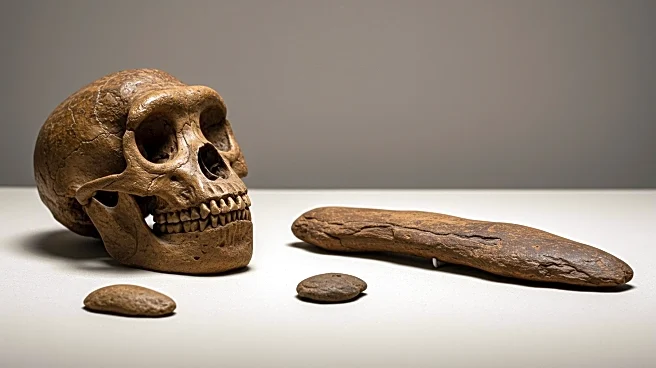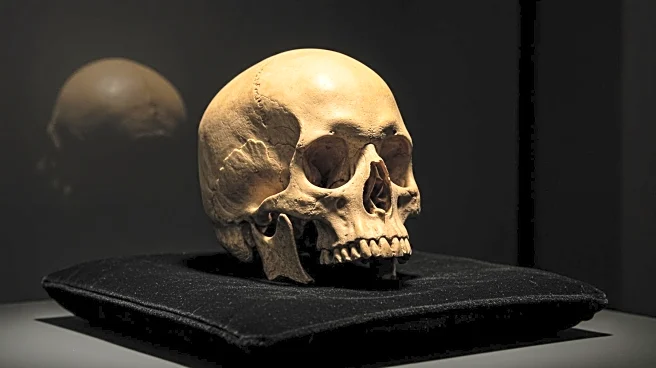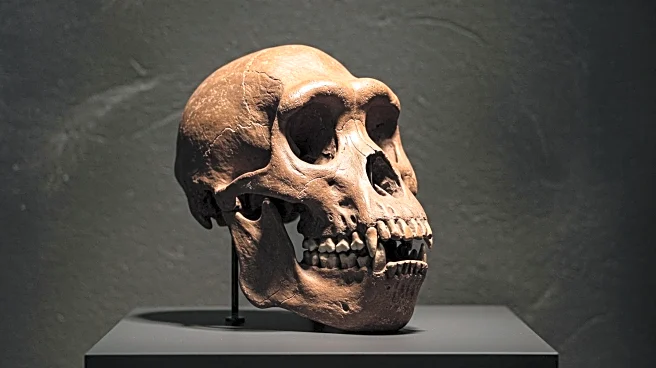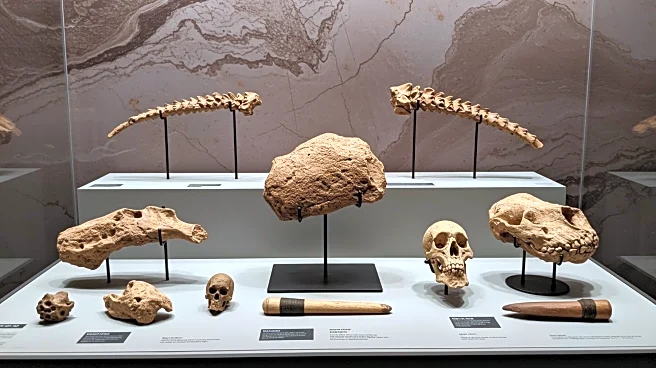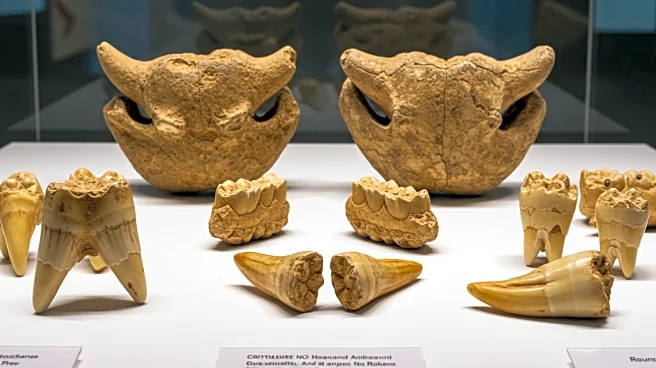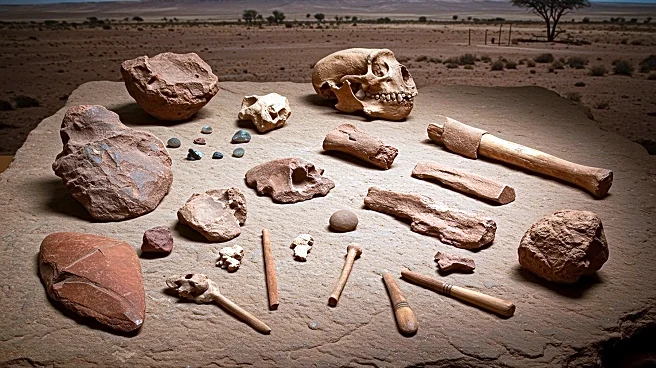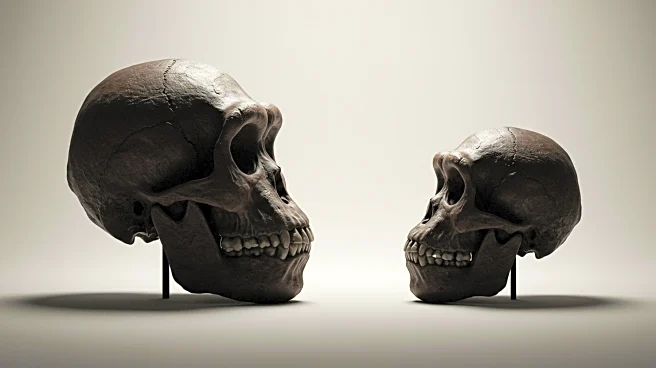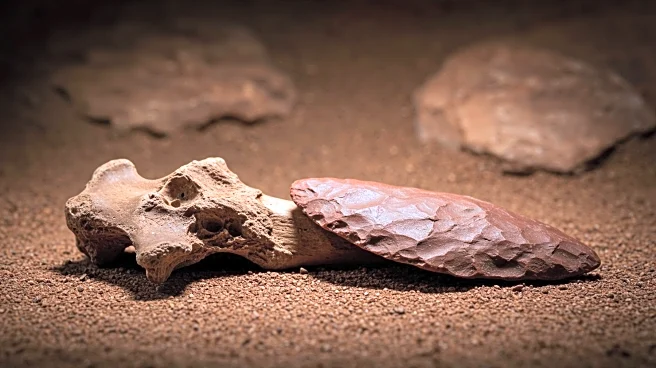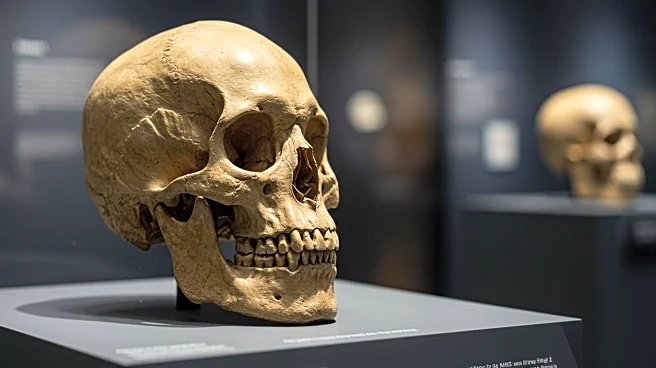What's Happening?
A team led by Brian Villmoare from the University of Nevada, Las Vegas, has proposed the coexistence of a previously unknown australopithecine species and the earliest known member of the Homo genus in Ethiopia, dating back approximately 2.6 million years. This hypothesis is based on the discovery of 13 teeth at the Ledi-Geraru site, which exhibit characteristics of both Homo and Australopithecus. The findings suggest that human evolution was not linear, with multiple human species overlapping in time and space. The research builds on previous discoveries, including the LD 350 mandible, which extended the record of recognizable Homo by half a million years.
Why It's Important?
The discovery challenges the traditional view of human evolution as a linear process, suggesting a more complex scenario with multiple human species existing simultaneously. This has implications for understanding the adaptive strategies and ecological niches occupied by early hominins. The findings could reshape theories about human ancestry and the evolutionary pressures that shaped the development of Homo species. It highlights the diversity of hominin species in East Africa and the evolutionary experiments that occurred in response to changing environmental conditions.
What's Next?
Further research is needed to confirm the identification of the new australopithecine species and to understand its relationship with early Homo. Additional fossil evidence could provide insights into the interactions between these species and their respective ecological roles. The study may prompt a reevaluation of existing hominin fossils and encourage new explorations in regions with similar geological contexts.
Beyond the Headlines
The discovery underscores the complexity of human evolution and the role of environmental changes in shaping hominin diversity. It raises questions about the factors that led to the survival of Homo species while others went extinct. The research may influence the broader understanding of evolutionary biology and the mechanisms driving species adaptation and survival.
